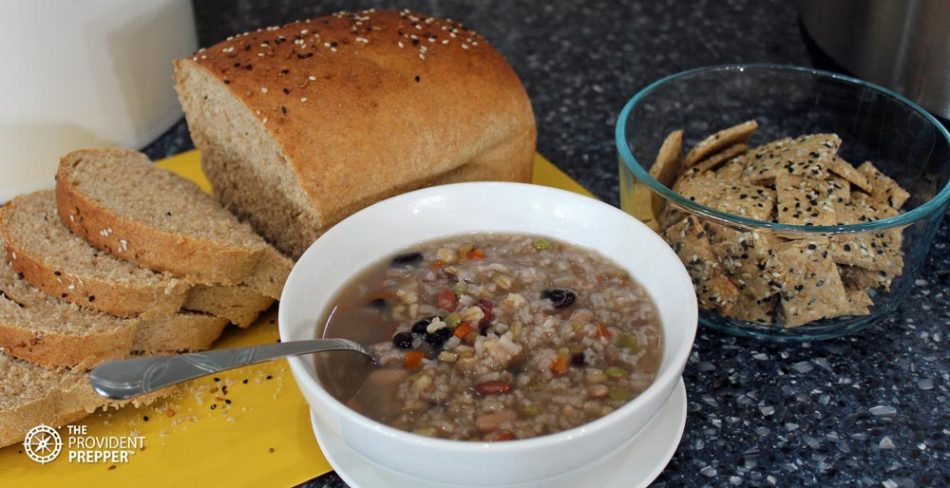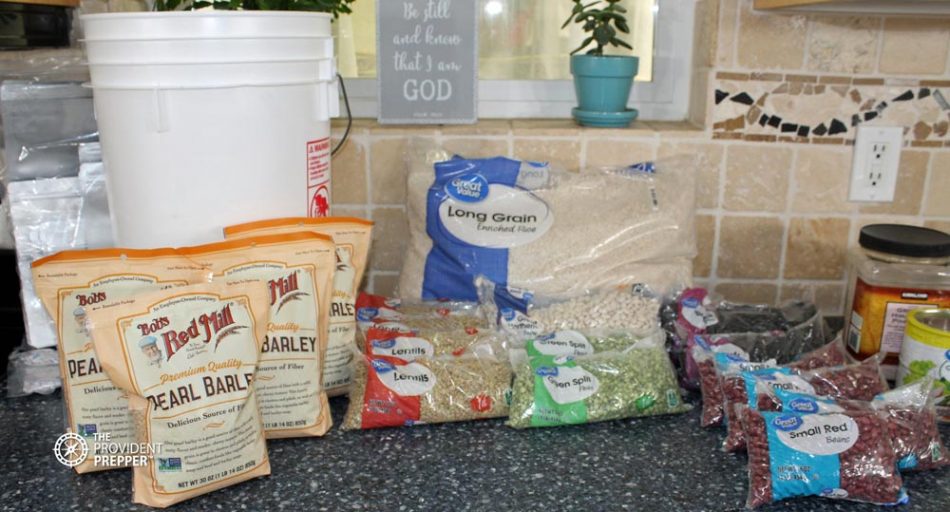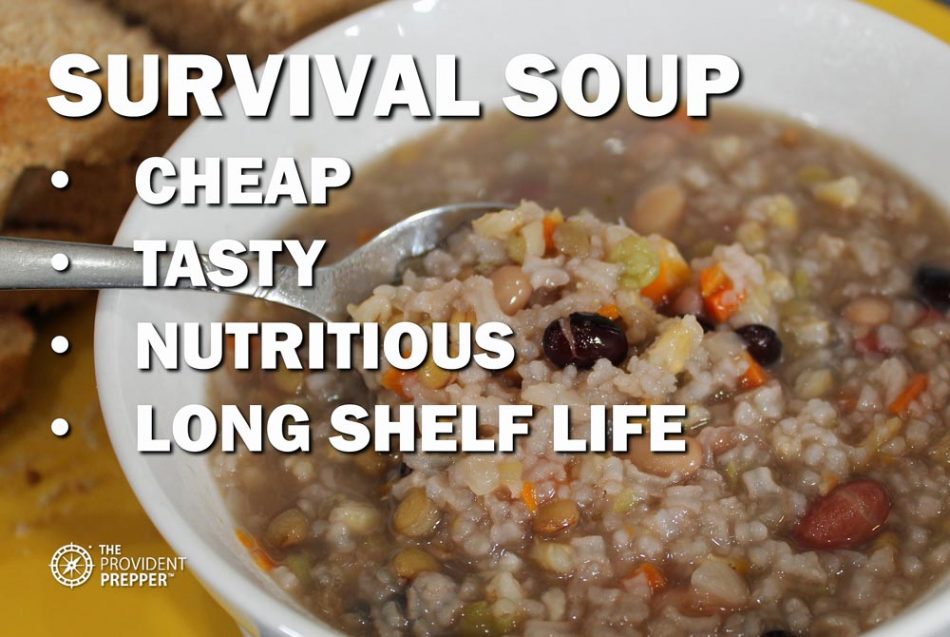Survival Soup: Cheap, Balanced Nutrition That Stores for Up to 30 Years
Written by Kylene in Food Storage,PreparednessApprox Reading Time: 6 minutes
Survival soup is a Scotch Broth variation that is quite tasty, and incredibly inexpensive, with ingredients that can be stored long-term. This combination of legumes and grains can be turned into all kinds of flavor combinations using ingredients that you have on hand. That makes it a great addition to your food storage program.
What are the advantages of Survival Soup?
Survival soup or Scotch Broth is a great twist on traditional rice and beans. The basic ingredients can be stored for up to 30 years and there is no end to the variations you can create by adding meat and vegetables. It is a great way to add nutrition and feed a lot of people for very little money. Best of all, it actually tastes great.
What are the disadvantages of Survival Soup?
Survival soup is not high in calories. That’s great if you are dieting but if you are trying to consume enough calories to survive in a rough situation you will have to eat a lot of this soup. The basic recipe below provides 1,139 calories, divided among 4 people is only 285 calories. Regardless of what you may have read, that is not enough calories to support life.In this post, we will share the recipe and review a few different storage options that may work for your unique circumstances. Watch the video for some interesting discussion about this recipe.
Survival Soup (Scotch Broth) Recipe
- 1/4 cup small red beans (or kidney)
- 1/4 cup black beans
- 1/4 cup white beans (or chickpeas or lima beans)
- 3/4 cup white rice
- 1/3 cup pearl barley
- 1/8 cup split peas
- 1/8 cup lentils
You can turn this into a chili by adding hamburger, onions, celery, tomatoes, chili powder, cumin, and salt. Or cook the beans with a ham hock for a delicious version of ham hock and beans. Add a soup bone and beef bouillon for another completely different soup. The possibilities for variations are endless.
You can vary the ingredients any way that you like. Use less rice. Use more beans. Include other varieties of beans. Make this unique to you.
How to Make a Long-Term Storage Bucket of Survival Soup Ingredients
You can create your own bucket of Survival Soup ingredients by packaging the ingredients inside Mylar bags with oxygen absorbers and placing them in a sealed bucket. All of these ingredients have a long shelf life of up to 25 or 30 years if stored correctly, except the pearl barley. Pearl barley is not a good candidate for long-term storage. I would personally rotate it within 10 years or so.You can store all of the ingredients separately or you can combine them to make life a little easier. I would package the red, black, and white kidney beans together in a Mylar bag or two depending on the size you are using. Then I would mix the rice, split peas, and lentils and put them in bags together. I would store the pearl barley separately in its own Mylar bag with an oxygen absorber.
The question of storing pearl barley with an oxygen absorber has come up. It is not a candidate for long-term storage but it has a moisture content of 10.1 percent so it is in the safe range for storage in a reduced oxygen environment. I think the pearl barley adds great flavor and nutrition to this recipe so I would definitely use it if you can.
Survival Soup Bucket Ingredients
- 4 pounds small red beans or kidney beans
- 4 pounds black beans
- 4 pounds navy beans, lima beans, or chickpeas
- 15 pounds white rice
- 8 pounds pearl barley
- 4 pounds lentils
- 2 pounds split peas
- Bouillon cubes
- Salt

Survival Soup Recipe from Bucket of Mixed Ingredients
- 1 cup bean mix
- 4 quarts of water
- 3/4 cup rice, split pea, lentil mixture
- 1/3 cup pearl barley
How to Make a Survival Soup Meal-In-A-Jar
Another great option is to store all of the ingredients inside mason jars with an oxygen absorber. You will have the same long shelf life as you get with the Mylar if stored in a cool, dry, dark location. Make this in a quart jar for a large family or in a pint jar for one or two.- Place an oxygen absorber in the bottom of a jar.
- Add the red, white, and black beans.
- Place the rice, lentil, and split peas in a small plastic bag and set them on top of the beans.
- Poke a tiny hole in the bag so that the oxygen absorber can remove the oxygen.
- Place the barley in a separate bag with a tiny hole in it.
- Add a copy of the recipe inside the jar for convenience.
This is a great method that helps with food storage rotation. It makes it incredibly convenient and reduces waste because we can refill the jar over and over.

Survival Soup: Cheap, Balanced Nutrition That Stores for Up to 30 Years | The Provident Prepper
Survival soup is a Scotch Broth variation that is quite tasty, and incredibly inexpensive, with ingredients that can be stored long-term. This combination of legumes…
